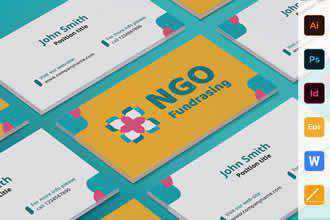How to Let Go of That Failing Creative Idea
We’ve all made excuses for why we haven’t gotten started on something we really want to do. We’re too busy, or we haven’t prepared enough to get started.
The truth is, there are a million excuses we all can use to avoid making the necessary choices and sacrifices we need to in order to truly succeed. However, sometimes those excuses are actually legitimate.
Sometimes we really do need to figure things out first before we acquire our first clients. And, sometimes we really ought to quit working on an idea that’s clearly going to be a failure.
The trouble is knowing whether our excuse is actually legitimate, or whether we’re just stalling. We’re going to explore some of the ways you can tell the difference, and start finishing everything you start.
Thinking It Over
In almost everything we do, there’s a lot to be gained from having a thought process that’s separate from taking action. Putting effort into the planning stage of a project is essential to ensuring that it will be a success.
Just like you probably wouldn’t just walk onto a stage in front of hundreds of people and start talking without having a speech prepared, it’s rarely a good idea to jump into something feet first and hope you swim instead of sink.
Take the time to really evaluate whether you’re ready to take action. Does your idea seem half-baked? Is it the best solution you can come up with for the problem you’re trying to solve? If you’re the type to act first and think later, make sure to slow down and visualize the actual end of your project. That’s right – pretend that you’ve already achieved your goal.
What, exactly, does that look like? What deliverables have been created? What is the reaction of your client? If the reality doesn’t match up with the hopeful scenario in your head, it’s time to recalibrate what you’ve been doing and start again.

Taking Action
This is where many of us get choked up. You’ve planned and planned for ages, and you’re sure your project is going to be a smashing success. Yet, for some reason, it’s extremely difficult for you to actually get started.
Maybe you’re missing some essential component, or you feel your skills in a certain area aren’t quite up to par. Whatever the excuse, it’s keeping you from actually taking that first step.
Believe it or not, there’s an easy fix to this common problem. It involves setting clear deadlines to action. Even if you haven’t completely thought everything out, it helps to just put something out there and get feedback from others.
If you’re working on a long-term project for a client and you find yourself struggling with making decisions, see if you can communicate with them more regularly and get their input. Or better yet, go find some of your client’s target audience members and ask them what they think of your work so far. Does it resonate with them? Which parts are the most successful?
This kind of “on the job” market testing is a great way to plan your work and take action at the same time. You don’t need to be 100% ready before you release your work to the world for evaluation.
Often, the ideas and suggestions you get from showing people what you have will help make your work even better than it would have been otherwise.
It’s better to do something – anything – that’s “good enough,” than it is to do nothing and wait for absolute perfection. You’ll learn more after you begin than you ever will by research and planning alone.

If You Don’t Succeed, Quit?
In a word, yes. Part of being successful is knowing that, many times, you are going to fail. If you want to succeed on a regular basis, you have to develop the foresight to know when to abandon an idea or project that’s not working.
The reason might be that you ran into complications that you didn’t plan for, or simply that you’re just not interested in making time to complete the project. It’s just as important to figure out what you actually want to work on as it is to make the decision to work on something.
The last thing you want is for a project you only feel so-so about to simply yield mediocre results, resulting in months or years of work for no big payoff. It’s much better to fail at something quickly – recognizing a failure when you see one.
If you’re working on a project and you can’t bring yourself to meet your minimum goals every day (30 minutes of writing, an hour of looking for new clients), perhaps it’s time to admit to yourself that what you thought you wanted to accomplish isn’t really working for you anymore.
Give yourself a hard deadline and evaluate your progress. If you haven’t taken any firm action within two or three weeks, then it’s important to be honest and ask yourself whether you actually want to finish this work.
Sometimes the answer is “no” – and that’s perfectly okay. We all miscalculate our enthusiasm for an idea from time to time, and there’s absolutely no shame in starting over if the interest suddenly evaporates.
Again, set a concrete goal (I’m going to finish this piece in three months, etc.) for taking action. Decide that you’re going to do everything that needs to be done to achieve this goal by your deadline. If it doesn’t happen, then you’ll know it’s time to move on and try something else.

A New View
Sometimes what we need is a new perspective. Determination is important for seeing a project through to the end, especially if it’s a personal project like a side business that no one is paying you to complete (and which may not yield financial results for years).
If you are burnt out on a project, but are absolutely sure you want to do it, it’s probably time to draw back from it a bit and look at it from a different angle.
Maybe all you need is some choice feedback from a trusted friend or mentor. Or perhaps a day spent brainstorming and gathering more inspiration will inject new life and vigor into your work.
The post How to Let Go of That Failing Creative Idea appeared first on Speckyboy Design Magazine.





